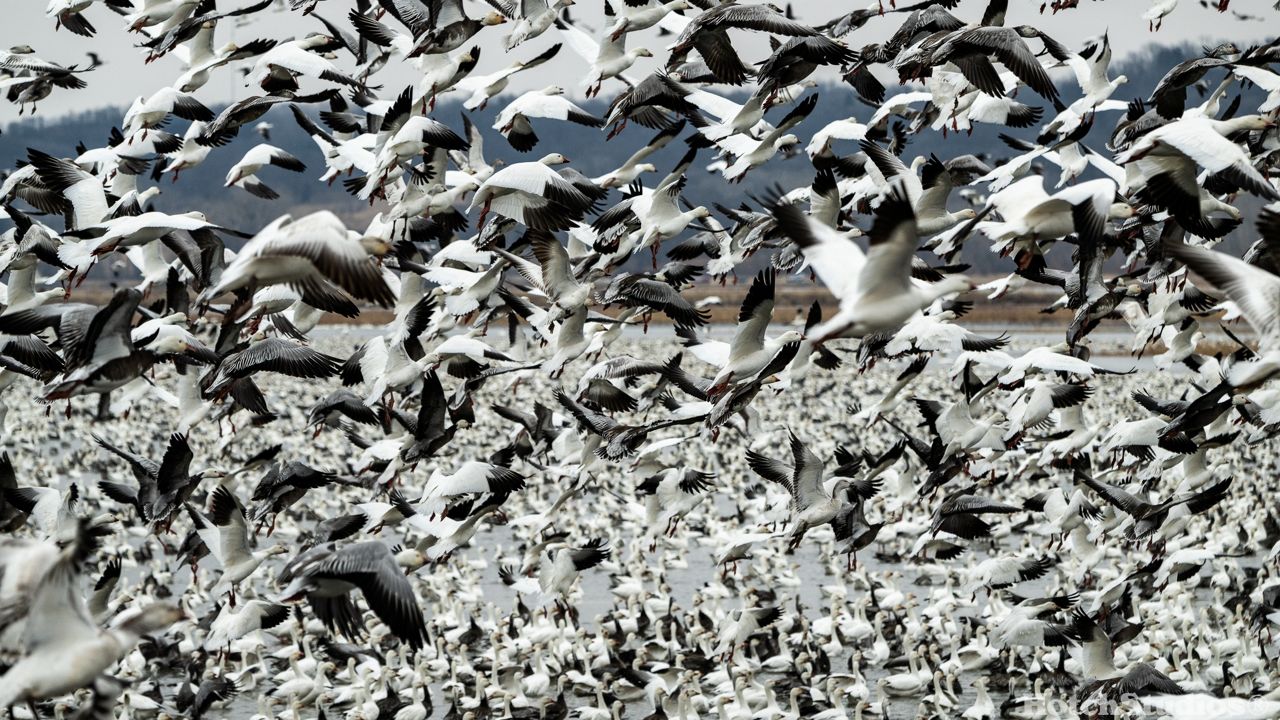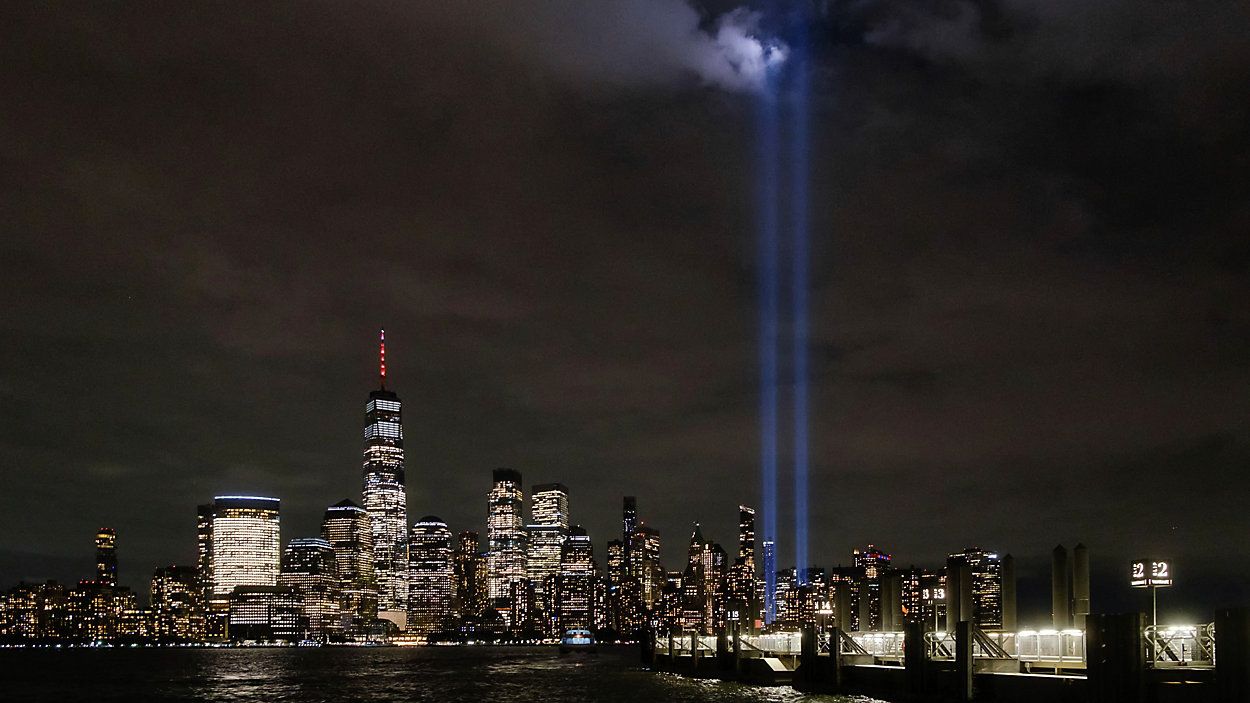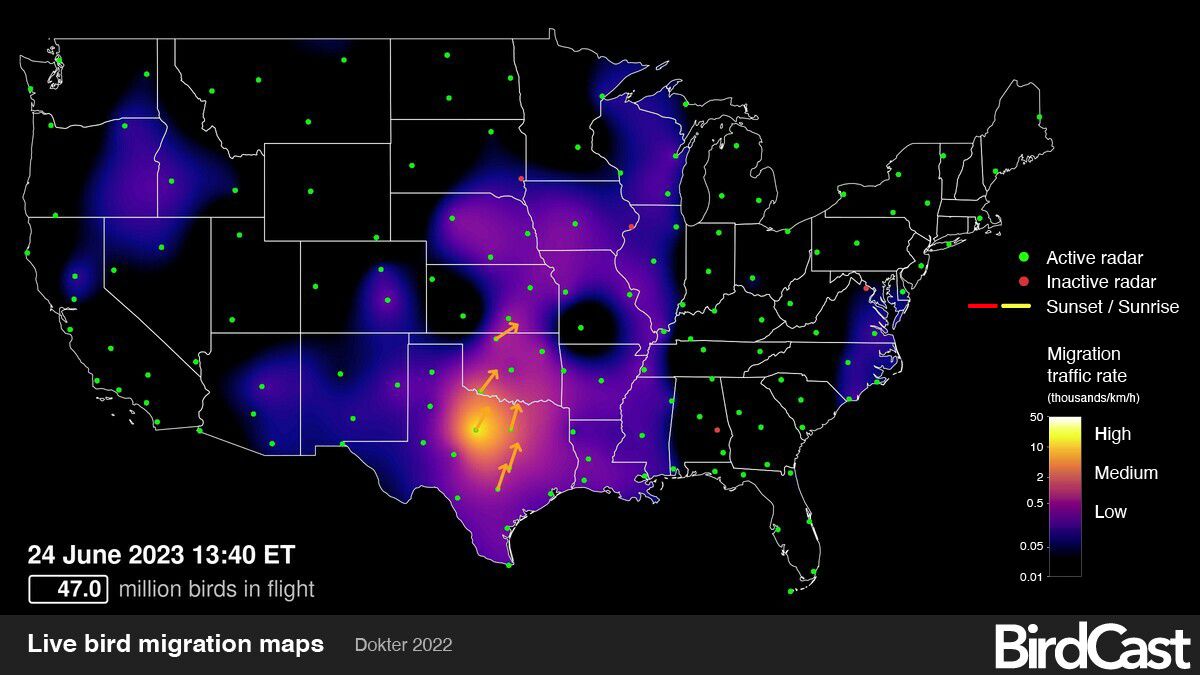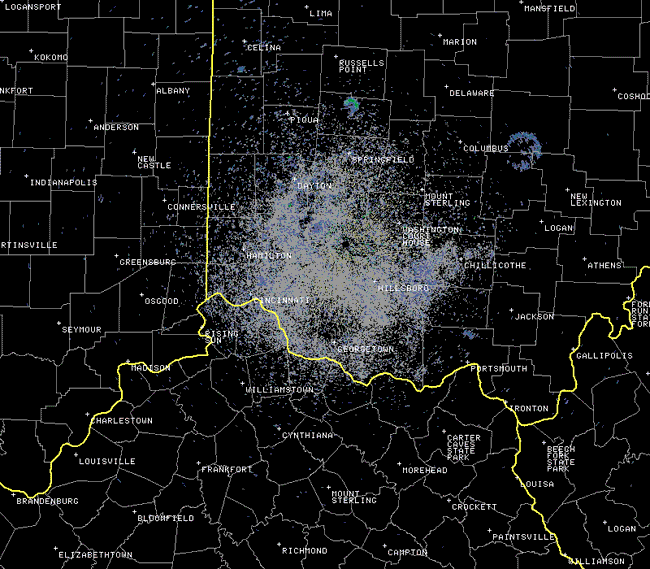Artificial intelligence (AI) has been used more recently and has now been used to predict bird migration using old weather radar images.
Here’s how it works.
There is a major migration twice a year in spring and autumn. It is estimated that over four billion birds fly in North America.
In one night, during peak migration, experts say more than 500 million could be on the move. The journey is tough as the winged fighters cover hundreds and even thousands of kilometers and have to contend with extreme weather, food shortages and light pollution.
Bright and constant lights can confuse birds and make them change their normal migration routes, sometimes causing death or injury. This is part of the reason why in 2016 the FAA required buildings and towers to have flashing lights.

(Photo by Derek Hodgkins)
Additionally, this light attraction is one of the reasons why New York City’s Central Park is one of the best birding spots on the East Coast. A variety of migratory birds are attracted by the bright lights and use the park’s vast woods as roosts.
Another example of light’s effect on bird migration is the 9/11 annual light tribute. Every September, during the migration season, a large number of flood lights are erected near the World Trade Center.
On a clear night, the lights can be seen from 50 miles away. Conservationists quickly noticed that many dead or injured birds were being seen near the memorial. The birds were attracted by the light and flew around until they were exhausted.
Now there are volunteers from the NYC Audubon Society at the floodlights every year. They work in two-hour shifts and count the number of birds. If the number of birds is more than 1,000, the lights are turned off for 20 minutes so that the birds escape from the display picture.

(AP Photo/David Ake)
In the early days ornithologists, a scientist who studied birds, followed the migration of birds in bands. They place a colorful plastic or metal band on a bird’s leg, then scientists in other parts of the world observe the birds and share with the band what species they see.
As you can imagine, with the number of migrating birds, banding just captures the movement of the population each spring and fall. Additionally, they can’t accurately predict which nights will see more migration activity, so they can alert local communities to reduce the use of outdoor lights.
In 2018, however, the science of bird migration made significant progress. BirdCast was born.

(BirdCast)
This is a project developed and led by Colorado State University, the Cornell Lab or Ornithology and the University of Massachusetts.
Using artificial intelligence, weather and historical weather radar data, BirdCast can predict bird migration intensity up to three days in advance.
Since the 1940s, weather radar has been able to detect things like bugs and birds, as well as rain and snow. As weather radar technology improved, the data was stored digitally.
When birds fly, they create a unique signature on radar. It looks like a circle on the radar display.

Base reflection animation, starting at 6:10 AM and ending at 7:17 AM on 8/2/2010 (NOAA)
The machines have learned to filter this clutter while tracking storms. This same filter is now used to combine historical radar records to create migration records spanning decades.
Computers have learned what birds look like compared to rain on radar. For decades, the computer programs have been tasked with crunching data, removing precipitation and displaying bird migration data. The findings show that the number of birds that fly in one night depends mainly on wind, temperature, barometric pressure and rainfall.
Now that ornithologists know the key factors that influence migration, they can now use this information to predict future migrations.
Next, birders want to know what birds migrate. Cornell’s Lab of Ornithology has developed software to listen to bird calls and identify bird species.
They hope to integrate this technology into BirdCast to provide a more complete picture of one of the world’s largest migrations.
Our team of meteorologists dive deep into the science of weather and break down current weather data and information. Check out our Weather Blogs section for more weather and climate stories.
[ad_2]
